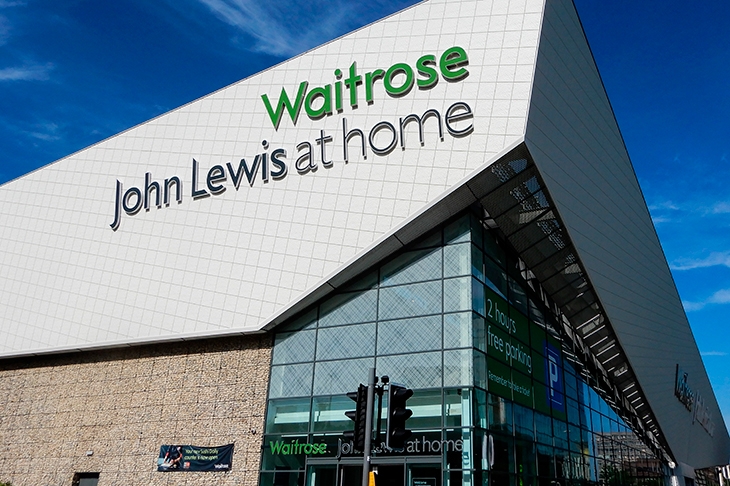Historians of unforeseen crises talk about ‘chaos theory’ and the ‘butterfly effect’, in which a small perturbation far away — the flapping of a butterfly’s wings in Australia, as it were — have impacts across much larger connected systems. More usually applied to weather events, the theory had its 2008 moment when the collapse of AIG, a US insurer whose name meant little over here, threatened to cripple so many banks that, without immediate bailouts, our high street ATMs (we were told) might have been switched off there and then. Let’s hope Greensill Capital, a little-known ‘shadow bank’ created by former Queensland sugar farmer Lex Greensill, doesn’t turn out to be a giant mutant butterfly: its collapse certainly has the makings of a huge story.
In summary: Greensill was in the unregulated business of ‘supply chain financing’ — short-term credit that assists companies to pay suppliers, though it’s also accused of encouraging large companies to pay small suppliers late and to obfuscate their true debts. Greensill grew its lending to $140 billion a year, raising funding via institutions such as Credit Suisse and covering risks by insurance from the likes of Tokio Marine of Japan. Its biggest client, owing $4 billion, was GFG — the combined interests of entrepreneur Sanjeev Gupta, who was hailed as an industrial hero when he bought several of Tata Steel’s threatened UK plants in 2017.
But cancellation of Tokio Marine’s insurance cover this month forced Greensill into the hands of administrators. Credit Suisse warned that it expects to take a hit, while thousands of jobs are said to be at risk in GFG’s UK and Australian operations. The Sunday Times is all over what it calls the ‘tangled web’ of Gupta’s political connections, and the story will run on. Most importantly, scholars of financial history are wondering what systemic damage might follow a withdrawal of investor support from a global shadow banking sector in which Greensill was just one ambitious player — and whose full scale and risk profile are unknown. Watch this space.
Whither John Lewis?
‘Why is there only one John Lewis Partnership?’ is a question I’ll tackle in my forthcoming book about modern capitalism. Actually the Partnership’s website tells us there are more than 370 other employee-owned businesses in the UK. But none compare in scale to the venerable retailer with its 80,000 ‘partners’, a business so embedded in middle-class culture that John Betjeman once said he would like to be in the haber-dashery department of its flagship Peter Jones store when the world ends, because ‘nothing unpleasant can ever happen there’.
Unpleasant things are happening in every high street, however, forcing John Lewis to close stores, slash prices, cancel partners’ annual bonuses and resort to debt because its ownership structure prevents the raising of new equity. As bad headlines pile up, so the chain’s distinctive reputation diminishes. Its booming supermarket arm Waitrose looks set for a different future from the fading department stores — and the question I may regretfully one day have to address is: ‘What killed the John Lewis Partnership?’
Pilloried
Bank of England governor Andrew Bailey and Met commissioner Dame Cressida Dick share an attribute: when appointed, both were hailed as head-and-shoulders the most competent of their generation to take on such challenging roles. That’s perhaps why both are so frequently urged by MPs and mischief-stirrers to resign in the wake of mishaps on their watch. In Bailey’s case, the flak is for alleged failings during his time as head of the Financial Conduct Authority relating to the collapse of London Capital & Finance (for which he has apologised to investors) and Neil Woodford’s fund business, plus an earlier involvement with an arm of RBS that was accused of brutalising small business customers.
As Bailey and Dick battle on — authority dented, jackals baying — others coming to senior posts from tough frontline careers should beware. Ex-MI5 chief Lord Parker, who takes over on April Fools’ Day as head of the Royal Household with a reputation as ‘Britain’s safest pair of hands’, is surely next for the stocks.
Art bizarre
The sale by Christie’s for $69 million of a digital collage by an artist called Beeple is a prize example of excess wealth chasing fashionable novelty. Next into the new arena of digital art — in which, naturally, bids are accepted in bitcoin — comes Britart bad-boy Damien Hirst with ‘The Currency’, a sale of 10,000 works on paper that will also exist as ‘non-fungible tokens’, or digital certificates of authenticity verified by blockchain. Yes, I’m as baffled as you are by that last sentence. But I’ve always had the feeling the Hirst oeuvre is essentially a cruel, money–spinning joke against the pretentions of the contemporary art world — and whatever form this latest offering takes, I’m sure he’ll be laughing all the way to the bank once more.
Lockdown pleasures
The end is in sight: time for a round-up of lesser-known businesses that have pleased customers in lockdown. In last year’s Spectator Economic Innovator Awards (stand by for news of this year’s, by the way) we hailed Pallite, which makes a £31.99 pop-up cardboard desk for working from home. Everyone’s on Netflix, but I’ve had better viewing from Cinema Paradiso, which sends foreign films on DVD by post. Indulging in vanity self–publishing, I was impressed by the attention to book-design detail of Imprint-Digital.com. A friend who knits and embroiders swears by Lovecrafts.com; another who cooks talks of little else but her Gousto recipe boxes. Finally, trenchermen praise Oriental Club Express’s flash-frozen curries. What’s your own favourite supplier of distraction or consolation? Answers to martin@spectator.co.uk.







Comments